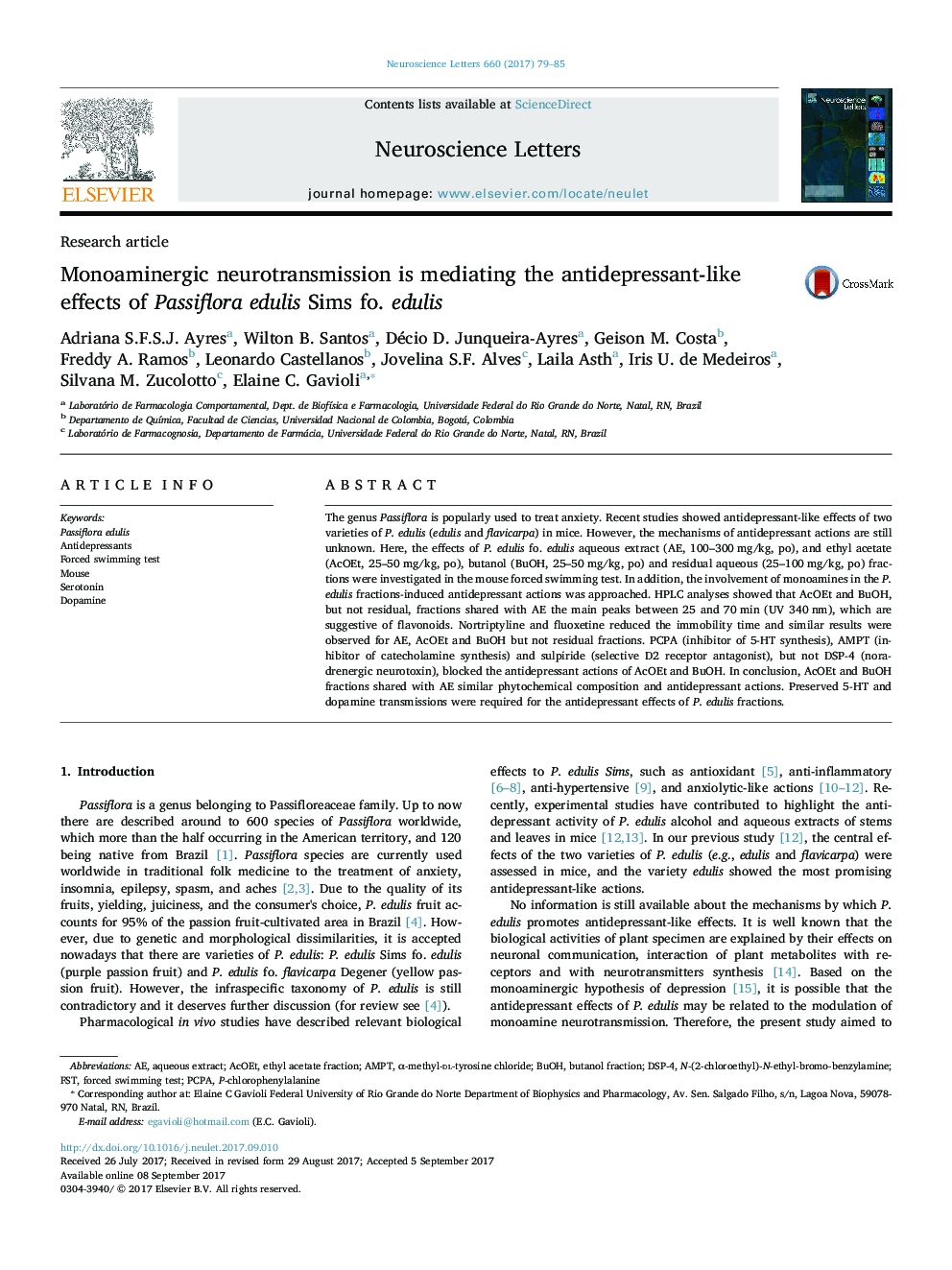| Article ID | Journal | Published Year | Pages | File Type |
|---|---|---|---|---|
| 5738533 | Neuroscience Letters | 2017 | 7 Pages |
â¢Administration of Passiflora edulis induces antidepressant-like effects in mice.â¢Flavonoids seem to be mediating the antidepressant effects of Passiflora edulis.â¢5-HT and dopamine transmission are needed for the antidepressant action of P. edulis.
The genus Passiflora is popularly used to treat anxiety. Recent studies showed antidepressant-like effects of two varieties of P. edulis (edulis and flavicarpa) in mice. However, the mechanisms of antidepressant actions are still unknown. Here, the effects of P. edulis fo. edulis aqueous extract (AE, 100-300Â mg/kg, po), and ethyl acetate (AcOEt, 25-50Â mg/kg, po), butanol (BuOH, 25-50Â mg/kg, po) and residual aqueous (25-100Â mg/kg, po) fractions were investigated in the mouse forced swimming test. In addition, the involvement of monoamines in the P. edulis fractions-induced antidepressant actions was approached. HPLC analyses showed that AcOEt and BuOH, but not residual, fractions shared with AE the main peaks between 25 and 70Â min (UV 340Â nm), which are suggestive of flavonoids. Nortriptyline and fluoxetine reduced the immobility time and similar results were observed for AE, AcOEt and BuOH but not residual fractions. PCPA (inhibitor of 5-HT synthesis), AMPT (inhibitor of catecholamine synthesis) and sulpiride (selective D2 receptor antagonist), but not DSP-4 (noradrenergic neurotoxin), blocked the antidepressant actions of AcOEt and BuOH. In conclusion, AcOEt and BuOH fractions shared with AE similar phytochemical composition and antidepressant actions. Preserved 5-HT and dopamine transmissions were required for the antidepressant effects of P. edulis fractions.
